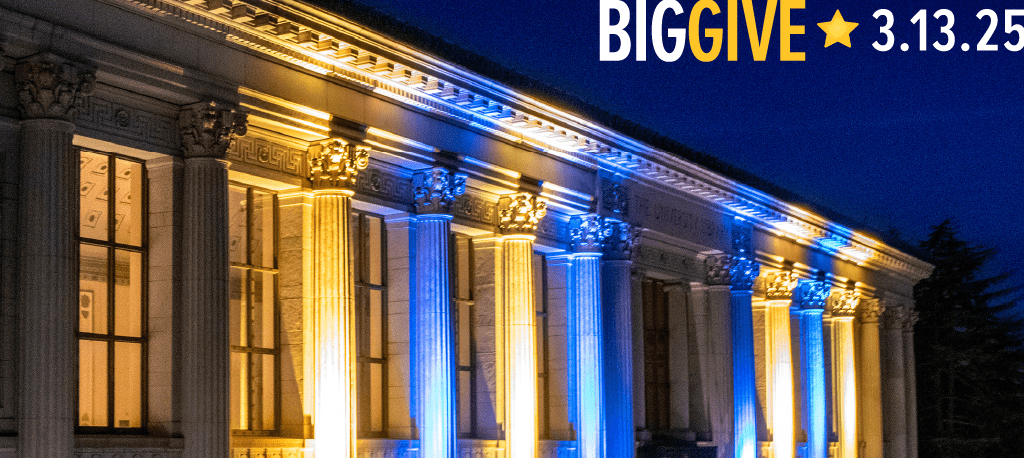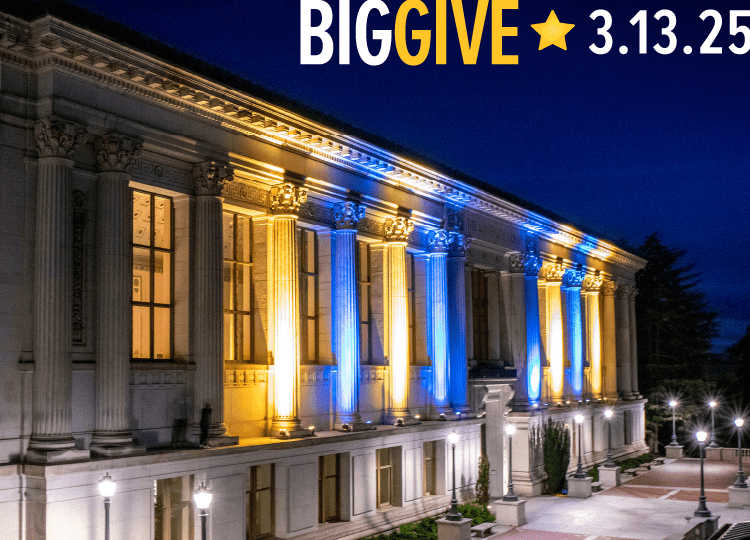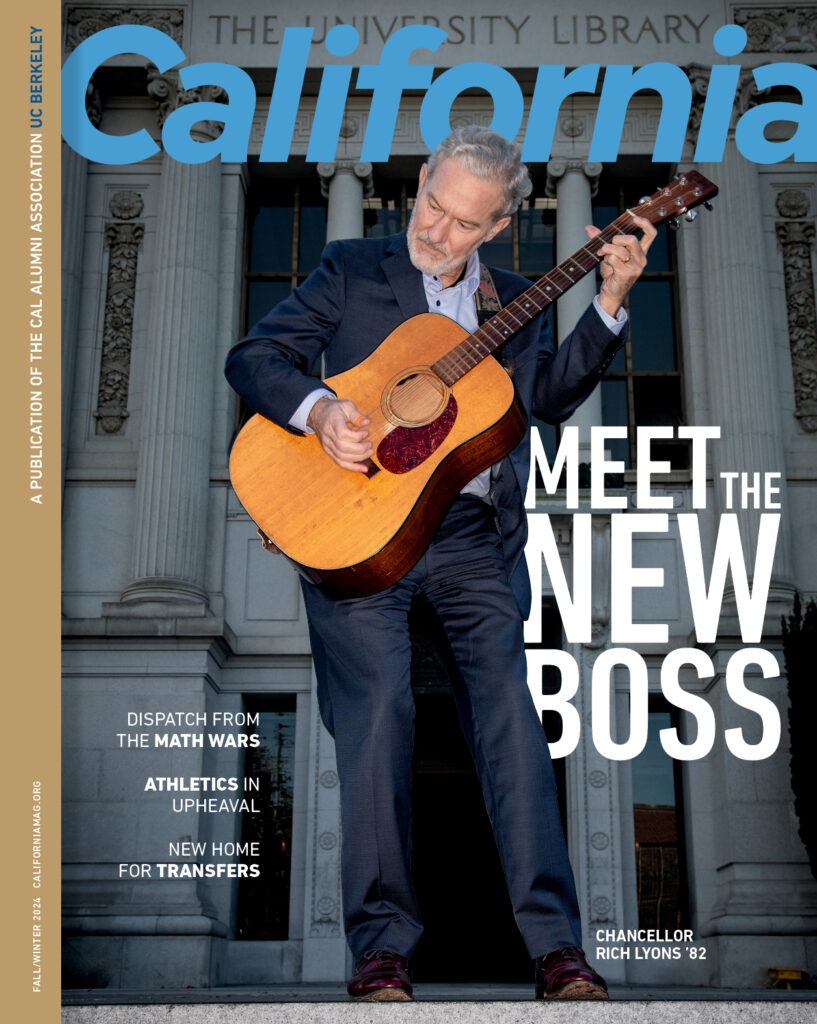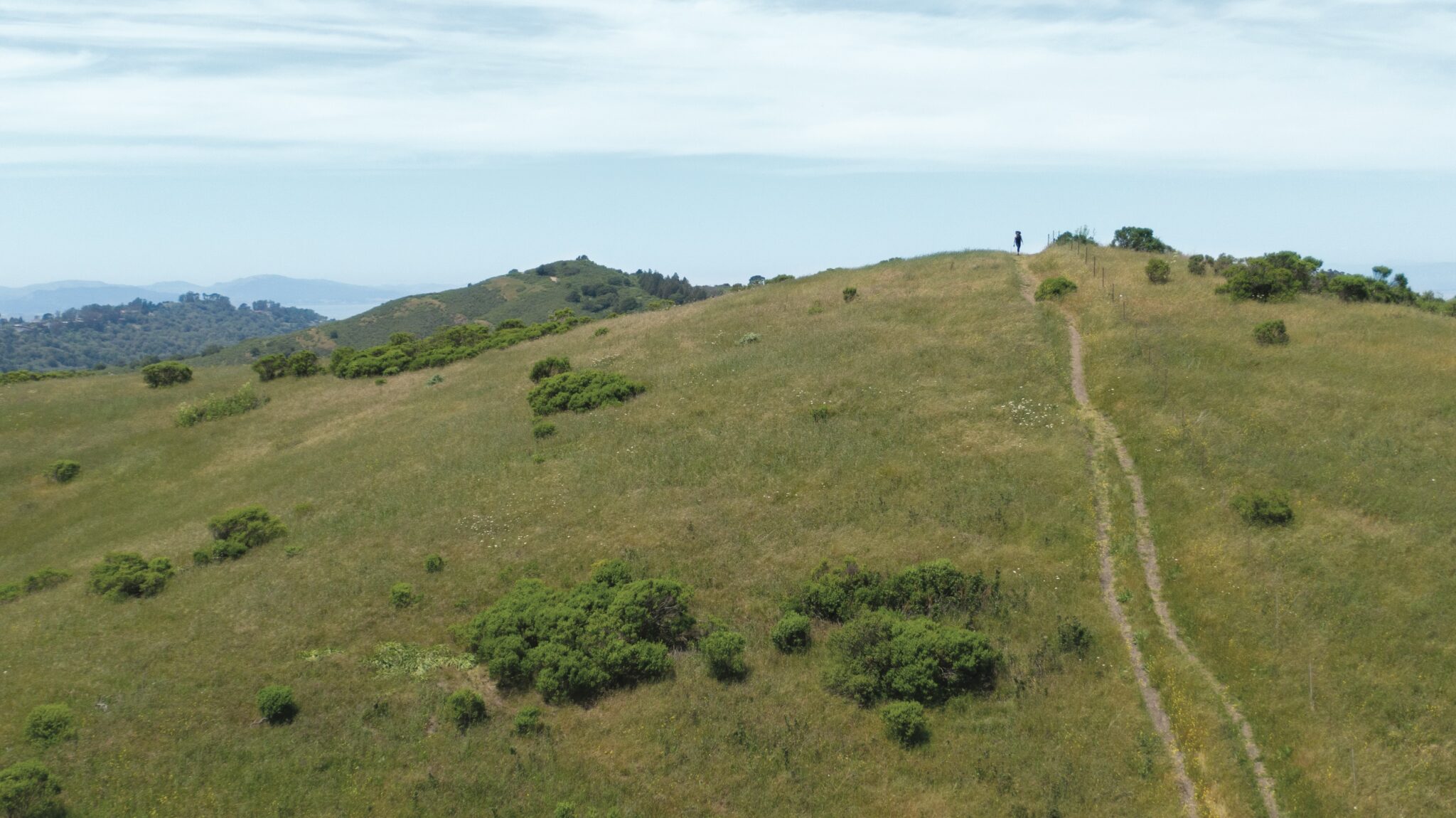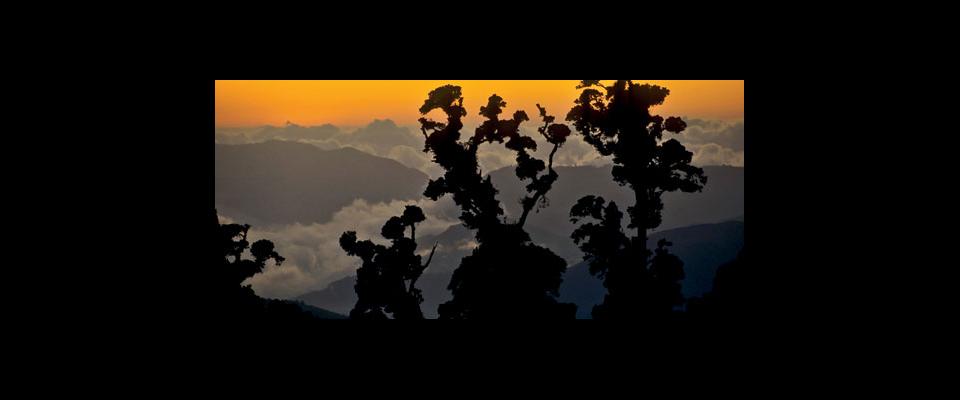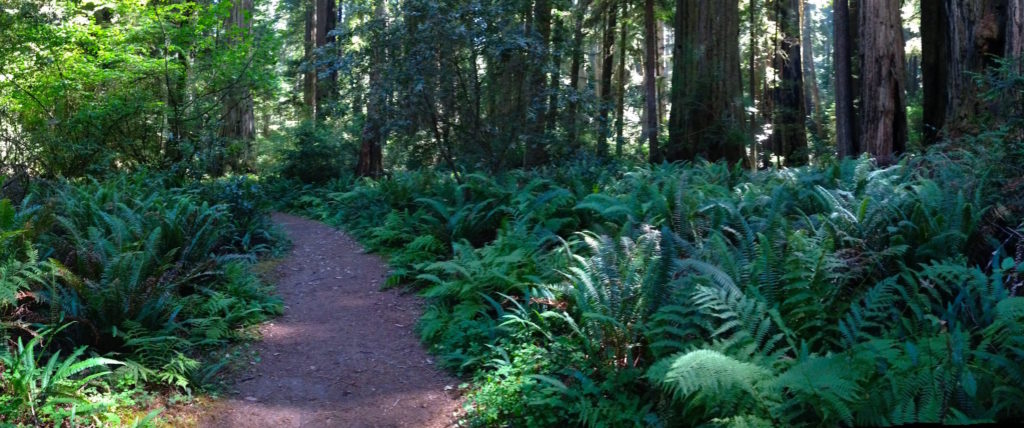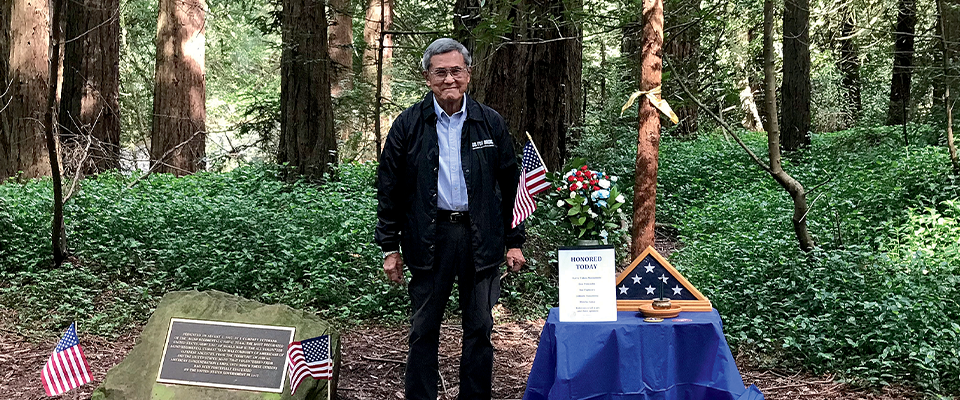Preparing to head out from the popular Skyline Gate Staging Area in Redwood Regional Park, a hiker is presented with a number of options. Most trails will take them deeper into Redwood itself, either along the ridge for grand views east to Mount Diablo or down into the valley, where young redwoods stand tall along a meandering stream. A hiker who chooses the leftmost trail, however—a skinny, single-track trail that weaves between the trees—can follow it through Huckleberry Preserve all the way to Sibley Regional Park, which sits atop a long-extinct, 10 million–year–old volcano.
From there, they can continue along the Skyline Trail through Tilden Park to Wildcat Canyon Regional Park and emerge at Alvarado Staging Area in Richmond, some 15 miles distant. Along the way, depending on the season, they might see red-tailed hawks courting or hunting prey, wild irises in bloom, or teeming clusters of convergent ladybugs clinging to mossy branches.
They will also see housing developments, highways, and cityscapes, of course. Nevertheless, the parks offer an escape to those who venture into them. To borrow the title of a Beach Boys song, they are, for many, including Berkeley students and faculty, the nearest faraway place.
The parks owe their existence in no small part to Robert Sibley, a 1903 graduate of Berkeley and the longtime executive manager of the California Alumni Association. In the early 1930s, when the water district announced the sale of surplus land, Sibley reportedly recruited friends and associates—many of whom also had connections to the university—to create a regional parks association. He was of the mind that “these valuable pieces of land ought to be preserved forever.” So were others, apparently.
“We were created in 1934, at the height of the Depression,” said Doug Bell, Ph.D ’92, wildlife program manager at East Bay Regional Park District (EBRPD), after East Bay voters put a measure on the ballot asking whether they would, in his telling, “be willing to pay whatever property tax rate would be assessed to form this kind of network of parks in the hills.” Their answer, by a two-and-a-half-to-one margin, was yes, and the first three parks were soon established: Upper Wildcat Canyon (now Tilden), Temescal, and Roundtop (later renamed for Sibley).
The parks had their biggest growth during the housing boom of the eighties as new housing developments were required to mitigate their environmental impact by setting aside land for habitat. The parks district became the landholder and used the windfall to expand.
“We were so lucky that that happened,” said Becky Tuden, ecological services manager at the parks. “Because otherwise it would be L.A.”

Today, the EBRPD comprises 73 park units across 125,000 acres. The city of San Francisco, by comparison, covers just 30,000 acres.
The parks provide a myriad of activities and services, from hiking and horseback riding to weddings and celebrations of life—as well as ecological services including wildlife habitat and watershed protection.
In every season, millions of people come to the parks to reflect, hike, and enjoy nature, but never more so than during the pandemic. Pre-pandemic, the parks saw 25 million annual visitors. After March 2020, the number increased by 30 percent.
Bell says the parks district prides itself on having stayed open through the pandemic, providing a valuable recreational resource for the public when there was little else to do. While increased visitation is welcome, however, it can put a severe strain on already delicate ecosystems. The parks contain dozens of animal species considered threatened or in an endangered state, from the snowy plover in the shoreline parks to Alameda whipsnakes in the grasslands.
“The impact of so much human-based activity on the landscape can be intense,” said Bell. When parks employees find a sensitive animal, like a golden eagle or its nest, in direct conflict with a trail, they close the path to human traffic. But often, he laments, hikers “just don’t give a damn.” When the rare short-eared owl showed up in Coyote Hills, what seemed like a hundred photographers lined up to take pictures.
“It’s great that people are so interested in wildlife, of course,” Bell said. “But there’s this dual pressure. We’d like people to hold back and give wildlife space while they try to enjoy it.”
Tuden echoed his sentiment. “We have these beautiful open spaces and park areas that do support these species. You can see mountain lions in the East Bay Hills and you can see native listed species in the ponds … We need to be stewards that respect the land for them,” she said. “It’s a habitat, not just a recreational area.”
With care, it might continue to be both.
Fifty years ago, local author and historian Malcolm Margolin wrote about that habitat in a book called The East Bay Out. Of Redwood Park, he wrote that it was “a magical mushroom of grassland, brush, and peaceful redwood forests,” where one night he “counted twenty-three deer browsing on a single meadow, and where there are innumerable foxes, racoons, skunk, possums, owls, and hawks.”
That, half a century later, visitors can still stroll through that forest and see those same animals, in a metropolitan area of nearly 8 million people, is truly remarkable.


